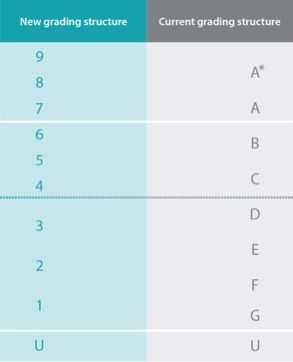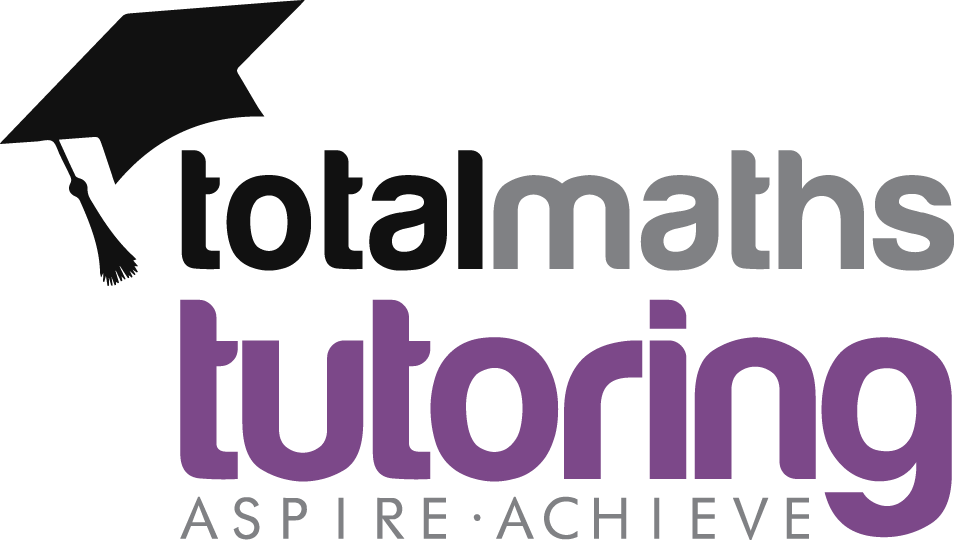The new GCSE grading system explained
The new GCSE grading system has been a source of huge confusion over the last couple of years, as parents and students get used to 9-1 grading rather than the old letter based system. To add to this, some subjects have been using the new system, with others still yet to migrate over. In 2019, you should find pretty much all subjects are now using the new system, so how is this new system different in maths and what does each grade mean? The changes can be understood a little more easily using a diagram:

Broadly speaking, the lettered system wasn’t providing enough differentiation. There was too wide a range of ability in students achieving B and C grades. Someone achieving a low grade C could have just scraped through, possessing a reasonably poor level of knowledge. Someone achieving a high scoring grade C would be significantly better mathematically, but on paper these two students would achieve the same result. The same argument could be made of students achieving a grade B.
The new system splits Grades B and C into students achieving a Grade 4, 5, or 6, allowing employers and further education providers more accurate information on a students mathematical ability:
Grade 4
(*Marks required per paper: Higher tier 17/80, foundation tier 46/80)
Known as a standard pass, this means a student possesses the basic level of maths required to get by in most employment, and to access college courses which don’t possess a great deal of mathematical content. Sixth form colleges will typically accept this grade as an entry requirement, but it won’t usually allow access to A levels in science based subjects or maths. If a student does not achieve a grade 4, they will be required to resit GCSE maths, whatever choice they make post sixteen.
Grade 5
(*Marks required per paper: Higher tier 27/80 Foundation tier 56/80)
Known as a good pass, this tells an employer or further education provider that a student possesses a good solid mathematical knowledge. The student will either have achieved a high percentage on the foundation tier, indicating that they are thorough in their work and make few mistakes, or have studied the higher tier and learnt some high level topics at a basic level. This grade opens a lot more doors post sixteen. Sixth forms generally still do not allow students achieving a grade 5 onto A level courses in science or maths as a rule, although if somebody scores a high grade 5 they may make exceptions.
Grade 6
(*Marks required per paper: Higher tier 37/80 Foundation tier unachievable)
This grade is equivalent to a strong grade B. This can’t be achieved on foundation tier and is an entry requirement for a lot of sixth form colleges, should students want to study for a science A-Level. If your child is studying foundation tier but wants to do a science based A-Level, you need to start addressing this early in year 10. The topics studied at higher tier are quite different to those on foundation tier now, so by the start of year 11 it is very difficult to switch tiers. Regular private tutoring, together with a good amount of effort on the part of the student should make the difference between a 4 and a 6, if we start working with a student early enough. Schools are usually fairly open to a change of tier if a student shows willing and is scoring highly on internal testing early in Year 10.
Grade 7
(*Marks required per paper: Higher tier 47/80)
The equivalent to the old A grade. Required for A Level mathematics at many sixth form colleges. This may seem quite a high entry requirement but past years have shown that students achieving below this will struggle to keep up with the demands of A Level maths. Again, a commitment to regular private tutoring will help students to bridge this gap if the sixth form are willing to accept a grade 6.
Grade 8 & Grade 9
(*Marks required per paper: Grade 8: Higher tier 57/80, Grade 9 Higher Tier 68/80)
The equivalent to the old A* grade. Students achieving these grades are solid mathematically and more than capable of achieving and succeeding at A Level maths and further maths. This is the other real change to the exam grading system, with A* now covering two grades. On the old system, it was difficult to differentiate between the large amount of students achieving A*. The new system allows further education providers to identify those exceptional students who have achieved almost full marks.
* Marks per paper taken from the June 2018 Edexcel GCSE grade boundaries. Other exam board grade boundaries may vary by a few marks per paper.
As you can see, it is important to know what grade your child needs in order to access the further education option they want to pursue. So why have tutoring?It has been shown that regular tutoring can make the difference of an extra 1-2 grades, if we start working with your child early enough. Students can always resit the GCSE exam, so if they haven’t achieved the grade they need this year, working with a private tutor to identify and improve their weak areas could make the difference and allow them to pursue the path they wish to in the future. Sixth form colleges will often allow entry onto A-Level courses on the condition the required grade is achieved in a resitting of the exam.
